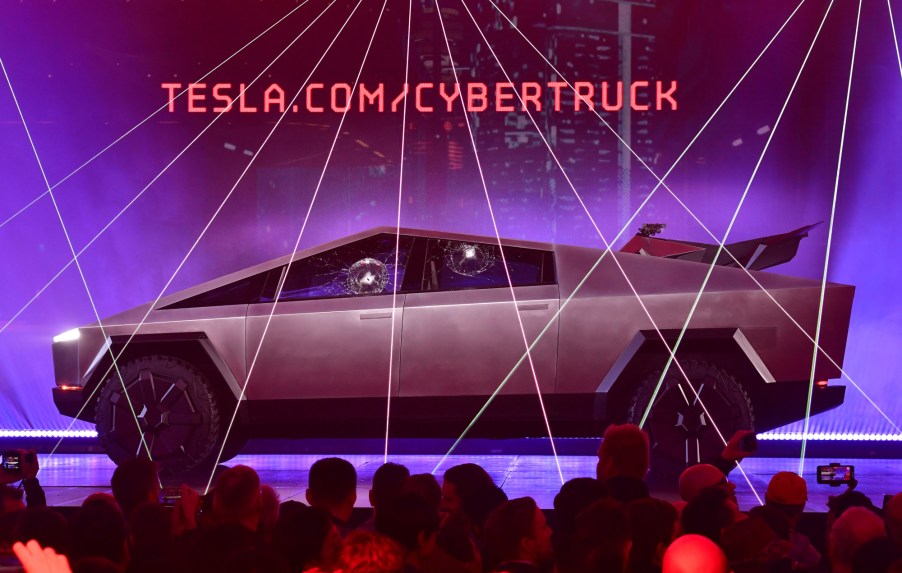
Grab Your Lightsaber: Is the Tesla Cybertruck Getting Laser Beam Windshield Wipers?
It isn’t surprising Tesla has patented some wild new technology using laser beams, but the actual use of the laser beams might surprise you. While the Tesla Cybertruck has officially been delayed until 2022, will Tesla use new laser beam technology instead of wipers? What could go wrong with laser beams on self-driving electric vehicles?
Tesla might use laser beams for the Cybertruck

These lasers wouldn’t be used for evil or Star Wars lightsabers but actually for windshields and cameras. Tesla made the news for this technology a few years back. However, nothing came of it at the time. Tesla previously applied for the patent on November 21, 2019, but was approved on September 7, 2021.
The patent details are as follows: “Pulsed laser cleaning of debris accumulated on glass articles in vehicles and photovoltaic assemblies.” What exactly does that mean? Tesla says it is a cleaning system for the EV that uses a laser to clean off a surface. Of course, it’s a lot more complicated than that.
The technical terminology explains it a bit more. “A cleaning system for a vehicle includes a beam optics assembly that emits a laser beam to irradiate a region on a glass article of the vehicle, debris detection circuitry that detects debris accumulated over the region, and control circuitry.” With such a complicated piece of technology, Tesla likely has big plans for the lasers behind the scenes. Adventures and the Cybertruck go hand in hand. Plus, there doesn’t seem to have any wipers in place. Lasers would be the perfect complement to the futuristic truck.
How would this technology work on the Cybertruck?
Tesla staff scientist, Phiroze Dalal, is credited with the idea. Windshield debris wouldn’t be the only goal of this. Based on the images presented in the official patent paperwork, Tesla would likely use the lasers to remove debris from necessary Tesla vision cameras around the car. Such debris might block the cameras from being able to perform required duties due to the obstruction.
Once it located the debris, the lasers would remove the debris until the surface was clean again. In an old article from Robb Report, it sounds like Tesla would also use the technology in the solar panel application. Lasers would keep debris off solar panels that might otherwise obstruct the technology was working correctly.
The electric vehicle would not be shining lasers directly in your face. Tesla would calibrate the lasers to aim in a direction that would not interfere with people. Plus, the automaker would coat the glass in indium tin oxide to prevent the beams from passing through.
It isn’t clear how it will be utlized yet
At first glance, the delayed Tesla Cybertruck seems to be lacking in windshield wipers. Perhaps this technology will be approved and integrated into the design by then? A Cybertruck doesn’t need regular wipers, after all. It’s a Cybertruck!
Tesla hasn’t commented about this recent approval and probably won’t for a while. Even if this technology doesn’t make it to cars, the idea is pretty cool. However, to fully realize Full Self-Driving, it makes sense there would be some technology to keep the cameras clean. Cameras get dirty during daily activities and wiping lenses off in traffic doesn’t seem logical.
Keep your eyes on the news, as Tesla might soon reveal how this technology will be used. Although at this rate, it could be a while. Keep your lightsaber handy, just in case your windshield wipers fail in the meantime.



